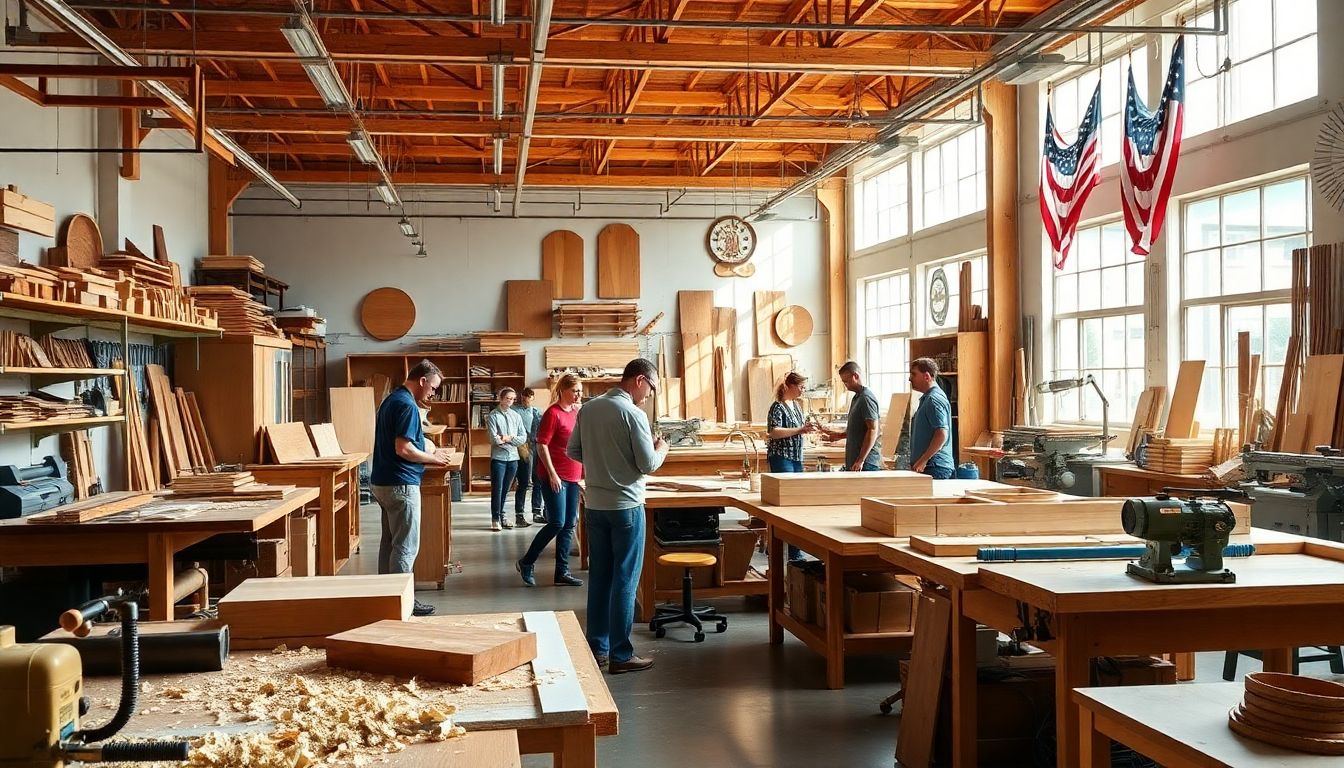Introduction
A woodworking career and hobby is gaining popularity with every passing day. More and more people are picking up the saws and chisels to craft furniture, paintings, and customized products. But if you wish to pursue it as a career, professional training is a must. Attending a woodworking school will hone your skills, acquaint you with available jobs, and connect you with the industry. Here is a step-by-step guide to the best US woodworking schools and how to select the best.
Why Attend a Woodworking School?
Advantages of Professional Training
Professional training from an accredited school hones your technical skills and safety procedures. Not only do you learn to work with wood, but you learn to do it safely. And most courses offer industry certifications that make you shine on your resume. Those credentials prove to employers that your skills are the genuine article, not imitations. And one more wonderful bonus: you get to work with instructors and fellow students who share your passion for woodworking. Having this network of contacts can lead to job referrals and possible work.
The Growing Demand for Veteran Woodworkers
Woodworking professions are safe and increasing. Labor statistics indicate that carpenters, furniture makers, and cabinetmakers are increasingly in demand. Successful entrepreneurs started out as students. Look at small furniture shops that grew into successful businesses. Ecoresponsive furniture and tailor-made furniture are growing trends. The infusion of skill and craftsmanship makes woodwork a star career now and in the coming years.
Best Colleges to Study Woodwork Across the United States
Top Ranked Programs
There are some schools that are highly reputed for their prestige programs and experienced instructors. They tend to have state-of-the-art shops, big tools, and a fine teaching tradition. For example, the Center for Furniture Craftsmanship in Maine provides a comprehensive course of study. Its faculty members are professional craftspeople. You learn from traditional joinery through modern design. These courses prepare you for professional practice or even your own business.
Community Colleges and Technical Schools
If cost is your top priority, then the community colleges are the way to go. They generally have shorter durations and certificates to give. Most of them also have an agreement with the local woodwork shops and factories. San Juan College in New Mexico is one such school. It is a hands-on school, less costly, and within reach for the majority of students. These are the best institutions to learn for novices or to further education at low costs.
Specialty and Apprenticeship Programs
Certain others specialize in specific types of woodworking, like custom cabinetmaking, fine furniture making, or wooden sculptural art. These are master-apprentice programs, a number of which are run by master craftsmen, which pay you while you’re being trained by masters. The American Lodge of Furniture Makers offers apprentices like this that train your skills and qualify you for fine projects.
Selecting the Best Woodworking School
Considerations
In choosing a school, check whether it is accredited and well-liked by professionals in the field. A good curriculum should complement your skill level, whether beginner or advanced. Being close will save commuting costs. Equipment and facilities should be new and of good quality. Performing well at a school whose graduates fared well is an additional plus.
Application and Enrollment Tips
Start to create a portfolio of your projects to show your abilities. Photos of projects or even a simple wood project are what most schools ask for. Scholarships, grants, or apprenticeships may be used to pay for classes. If you can, personally tour schools. Ask about class size, the experience of the instructors, and job counseling at open houses.
What You May Expect from a School Experience in Woodworking
Practical Skills and Hands-On Training
Most programs focus on doing rather than just listening. You’ll learn safe tool handling, joinery techniques, and finishing skills. Expect to complete real projects like a small table or chair. You’ll build confidence through step-by-step practice and mentor feedback.
Instructor Expertise and Industry Connections
Most instructors are seasoned professionals with years of experience in the industry. They teach from experience and war stories, and lessons are made relevant. Schools also expose students to industry events, trade shows, or internships. These give you practical experience and a job networking venue.
Certification and Career Support
Most schools provide certificates of your competence. Some also provide job placement or business startup support. Alumni testimonials demonstrate the power of intensive training in getting your woodworking business in high gear.
Practical Advice for Woodworking Wannabes
- Begin with small classes or internet courses.
- Build a portfolio of your work, even little things.
- Get exposure by joining woodworking guilds or craft fairs.
- Learn constantly—take higher-level classes and gain more certifications along the line.
Conclusion
Choosing the right woodworking school is the foundation of a successful and rewarding craft career. Look for schools with proper accreditation, in-shop training, and professional affiliations. Skills are optimum when you possess them, rehearse them, and keep learning. In case you want to create furniture, cut designs, or run your own shop, the right school can help you turn your dream into a career. Begin today and build a tomorrow that you can live your dreams in.
